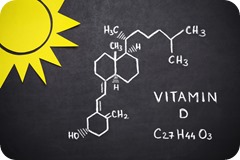Results from previous observational studies on the relationship between low serum levels of vitamin D and the risk for multiple sclerosis was recently advanced in a Finnish Maternity Cohort including 1.8 million samples of serum from 800,000 women. A group of 1092 women diagnosed with multiple sclerosis were included in the study and then matched with 2123 controls. The mean age of diagnosis of multiple sclerosis was 37 years old.
Women who had deficient serum vitamin D levels (25-hydroxyvitamin D) below 30 nmol/L had a 43% increased risk for multiple sclerosis compared with women who levels were 50 nmol/L or greater. Women with insufficient levels (30-50 nmol/L) had a 27% increased risk compared with women who levels were 50 or greater.
Commentary: These findings are compelling in establishing an increased risk for multiple sclerosis in women who have a serum level less than 50, and even more so if less than 30 nmol/L. BUT…..the units used in this study are different than most reporting labs in the U.S. This 30 nmol/L is equivalent to 12 ng/mL and ng/mL would be the more typical unit that appears on U.S. blood work. A number of 12 ng/mL is indeed considered deficient (< 20 ng/mL). A number of > 30 is considered sufficient. A number between 20 and 30 is considered insufficient by most endocrinologists and practicing clinicians, despite the Institute of Medicine guidelines that above 20 ng/mL is sufficient. My conclusion then would be that women with a serum 25-hydroxyvitamin D levels < 12 ng/mL have a 43% increased risk of multiple sclerosis and women with a number between 12 and 20 ng/mL would have a 27% increased risk of multiple sclerosis compared to women who have a level > 20 ng/mL. My goal, for overall health, risk for multiple sclerosis, risk for osteoporosis, is still, > 30 ng/mL, the units that most of us will see on lab results in the U.S.
Reference: Munger K, et al. 25-hydroxyvitamin D deficiency and risk of MS among women in the Finnish Maternity Cohort. Neurology 2017; sep 13 (epub)

